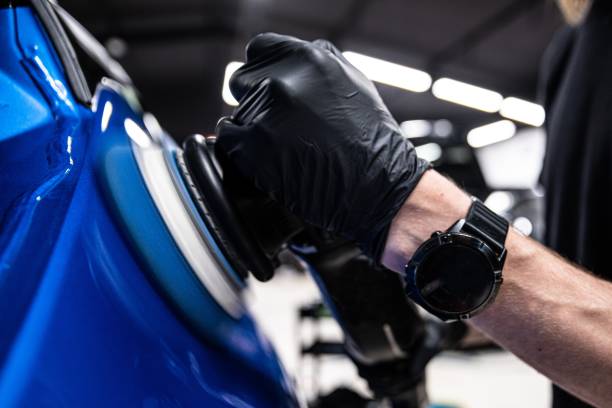Driving an automatic car offers a seamless and stress-free experience, especially for those new to driving or who prefer a more relaxed journey. Unlike manual vehicles, automatic cars handle gear changes for you, allowing you to focus more on the road and less on shifting gears. While driving an automatic car is generally straightforward, mastering a few key techniques can enhance your driving efficiency, safety, and comfort. This guide covers essential driving techniques for automatic cars, helping you become a more confident and skilled driver.
Understanding the Basics of Automatic Transmission
Before diving into specific techniques, it’s crucial to understand how an automatic transmission works. Automatic cars have a transmission system that automatically shifts gears based on speed, engine load, and throttle position. The key components of an automatic gearbox include:
- P (Park): Locks the transmission, preventing the car from moving.
- R (Reverse): Allows the car to move backward.
- N (Neutral): Disconnects the engine from the wheels, allowing the car to roll freely.
- D (Drive): Engages the forward gears and allows the car to move forward.
- L (Low Gear): Limits the car to lower gears, providing more power at lower speeds, useful for steep inclines or towing.
Starting and Stopping Smoothly
Starting and stopping an automatic car is easier than in a manual car, but doing so smoothly requires practice:
- Starting the Car:
- Ensure the gear lever is in ‘P’ (Park).
- Press the brake pedal firmly.
- Turn the ignition key or press the start button.
- Once the engine is running, shift the gear lever to ‘D’ (Drive) or ‘R’ (Reverse) for forward or backward movement, respectively.
- Gradually release the brake pedal and press the accelerator gently to move.
- Stopping the Car:
- Gradually press the brake pedal to slow down.
- Shift the gear lever to ‘P’ (Park) when the car has come to a complete stop.
- Engage the parking brake for added safety.
Maintaining a Steady Speed
Automatic cars excel at maintaining a steady speed, making highway driving more comfortable:
- Use Cruise Control: Many modern automatic cars are equipped with cruise control. This feature allows you to set a constant speed, reducing the need to keep your foot on the accelerator during long drives.
- Anticipate Traffic Flow: Avoid sudden acceleration or deceleration by anticipating traffic conditions. This technique not only ensures a smoother ride but also improves fuel efficiency.
- Gentle Acceleration: Automatic transmissions respond to how much pressure you apply to the accelerator. Pressing the pedal gently and steadily will result in smoother gear shifts and better fuel economy.
Navigating Slopes and Inclines
Driving on slopes and inclines can be challenging, but automatic transmissions make it easier:
- Use the Right Gear: When driving uphill, if your car has a manual mode or low gear option (‘L’ or ‘2’), use it to prevent the transmission from shifting too frequently. This provides more power and control.
- Hill Start Assist: If your car is equipped with Hill Start Assist, it will automatically hold the brakes for a few seconds after you release the brake pedal, preventing rollback on steep inclines.
- Downhill Driving: When driving downhill, avoid riding the brakes continuously. Instead, shift to a lower gear to utilize engine braking, which helps control your speed without overusing the brakes.
Handling Traffic and Stop-and-Go Situations
Automatic cars are well-suited for city driving and heavy traffic, but there are techniques to make these situations even easier:
- Smooth Braking: Anticipate traffic flow and brake smoothly. Abrupt stops can cause discomfort and increase wear on your brake pads.
- Creeping in Traffic: In heavy traffic, lightly releasing the brake pedal will allow the car to ‘creep’ forward slowly. This technique is useful in stop-and-go traffic.
- Avoid Overheating the Transmission: Prolonged stop-and-go driving can cause the transmission to overheat. If possible, shift to ‘N’ (Neutral) when stopped for extended periods to allow the transmission to cool.
Parking with Precision
Parking an automatic car requires a different approach compared to a manual car:
- Parallel Parking: When parallel parking, use the ‘R’ (Reverse) gear to back into the space slowly. Turn the steering wheel in the desired direction, and adjust as needed.
- Parking on a Slope: When parking on a slope, always engage the parking brake after shifting to ‘P’ (Park) to prevent the car from rolling.
- Using Parking Sensors and Cameras: Many modern automatic cars are equipped with parking sensors and rearview cameras. Use these tools to guide your parking and avoid obstacles.
Driving in Different Weather Conditions
Automatic cars handle well in various weather conditions, but certain techniques can enhance your safety:
- Wet or Slippery Roads: In wet or slippery conditions, avoid sudden acceleration or braking. Gradually apply the brakes to prevent skidding.
- Snow and Ice: If driving in snow or ice, use the ‘L’ (Low Gear) to maintain traction. Some automatic cars have a ‘Snow’ mode, which adjusts the transmission for better handling in slippery conditions.
- Foggy Conditions: Reduce your speed and use low beams or fog lights. Maintain a safe following distance to give yourself more time to react to the car in front.
Conclusion
Mastering driving techniques for automatic cars can significantly improve your driving experience, making it smoother, safer, and more enjoyable. By understanding the nuances of your vehicle’s transmission system and applying these techniques, you’ll be better equipped to handle various driving conditions with confidence. Whether you’re navigating city streets, cruising on highways, or tackling challenging slopes, these tips will help you make the most of your automatic car’s capabilities.




